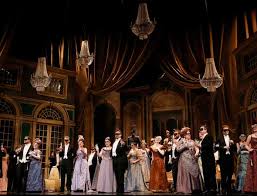Stamp: State Opera, Vienna by Van der Nüll & Siccard v Siccardsburg (Austria 1993)
State Opera, Vienna by Van der Nüll & Siccard v Siccardsburg (Austria 1993)
22 January (Austria ) within release Visual Art goes into circulation Stamp State Opera, Vienna by Van der Nüll & Siccard v Siccardsburg face value 7 Austrian schilling
| Stamp State Opera, Vienna by Van der Nüll & Siccard v Siccardsburg in catalogues | |
|---|---|
| Michel: | Mi:AT 2086 |
| Yvert et Tellier: | Yt:AT 1915 |
Stamp is square format.
Also in the issue Visual Art:
- Stamp - Michael Wing of the Vienna Hofburg by Fischer von Erlach face value 5;
- Stamp - Daun-Kinsky Palace, Vienna by J.L. von Hildebrandt (1668-174 face value 5.50;
- Stamp - State Opera, Vienna by Van der Nüll & Siccard v Siccardsburg face value 7;
Stamp State Opera, Vienna by Van der Nüll & Siccard v Siccardsburg it reflects the thematic directions:
Architecture (Latin architectura, from the Greek ἀρχιτέκτων arkhitekton "architect", from ἀρχι- "chief" and τέκτων "builder") is both the process and the product of planning, designing, and constructing buildings and other physical structures. Architectural works, in the material form of buildings, are often perceived as cultural symbols and as works of art. Historical civilizations are often identified with their surviving architectural achievements.
Opera is a form of theatre in which music is a fundamental component and dramatic roles are taken by singers. Such a "work" (the literal translation of the Italian word "opera") is typically a collaboration between a composer and a librettist and incorporates a number of the performing arts, such as acting, scenery, costume, and sometimes dance or ballet. The performance is typically given in an opera house, accompanied by an orchestra or smaller musical ensemble, which since the early 19th century has been led by a conductor. Although musical theatre is closely related to opera, the two are considered to be distinct from one another.
Art is a diverse range of human activities in creating visual, auditory or performing artifacts (artworks), expressing the author's imaginative or technical skill, intended to be appreciated for their beauty or emotional power. In their most general form these activities include the production of works of art, the criticism of art, the study of the history of art, and the aesthetic dissemination of art. The oldest documented forms of art are visual arts, which include creation of images or objects in fields including painting, sculpture, printmaking, photography, and other visual media. Architecture is often included as one of the visual arts; however, like the decorative arts, or advertising, it involves the creation of objects where the practical considerations of use are essential—in a way that they usually are not in a painting, for example. Music, theatre, film, dance, and other performing arts, as well as literature and other media such as interactive media, are included in a broader definition of art or the arts. Until the 17th century, art referred to any skill or mastery and was not differentiated from crafts or sciences. In modern usage after the 17th century, where aesthetic considerations are paramount, the fine arts are separated and distinguished from acquired skills in general, such as the decorative or applied arts.



